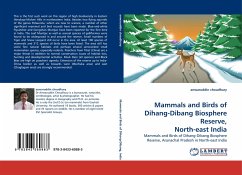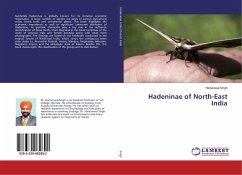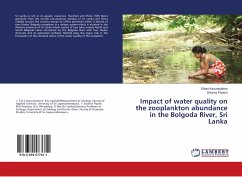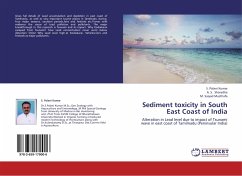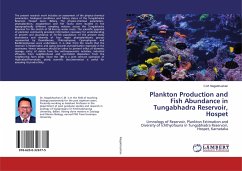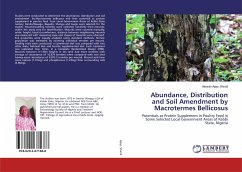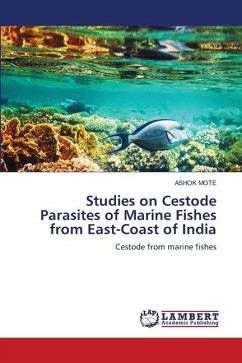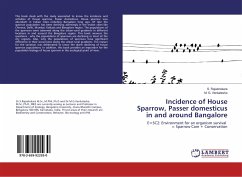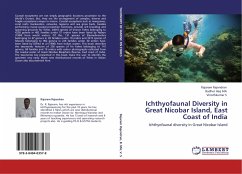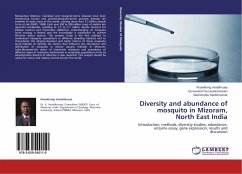
Diversity and abundance of mosquito in Mizoram, North East India
Introduction, methods, diversity studies, adundance, enzyme assay, gene expression, results and discussion
Versandkostenfrei!
Versandfertig in 6-10 Tagen
41,99 €
inkl. MwSt.

PAYBACK Punkte
21 °P sammeln!
Mosquitoes (Diptera: Culicidae) and mosquito-borne diseases have been threatening human and animals.Mosquito-borne parasitic diseases are endemic in many areas of the world, causing more than 3.2 billion people to be at risk (WHO, 1998). Each year 300 to 500 million cases of malaria are reported worldwide, resulting in 1.5 to 2.7 million deaths (Centers for Disease Control and Prevention 2004).Our understanding of mosquito larval ecology is limited and the knowledge is insufficient to achieve effective vector control. The present study is the first attempt to understand mosquito associations i...
Mosquitoes (Diptera: Culicidae) and mosquito-borne diseases have been threatening human and animals.Mosquito-borne parasitic diseases are endemic in many areas of the world, causing more than 3.2 billion people to be at risk (WHO, 1998). Each year 300 to 500 million cases of malaria are reported worldwide, resulting in 1.5 to 2.7 million deaths (Centers for Disease Control and Prevention 2004).Our understanding of mosquito larval ecology is limited and the knowledge is insufficient to achieve effective vector control. The present study is the first attempt to understand mosquito associations in different breeding habitats and to characterize the physico-chemical and biotic factors of these mosquito larval habitats to identify the factors that influence the abundance and distribution of mosquito in diverse aquatic habitats in Mizoram, India.Moreover,the status of insecticide resistance and prevalence of different types of resistance mechanisms in anopheles populations from six administrative districts of Mizoram is also reported. This analysis should be useful for vector and malaria control all over the world.



